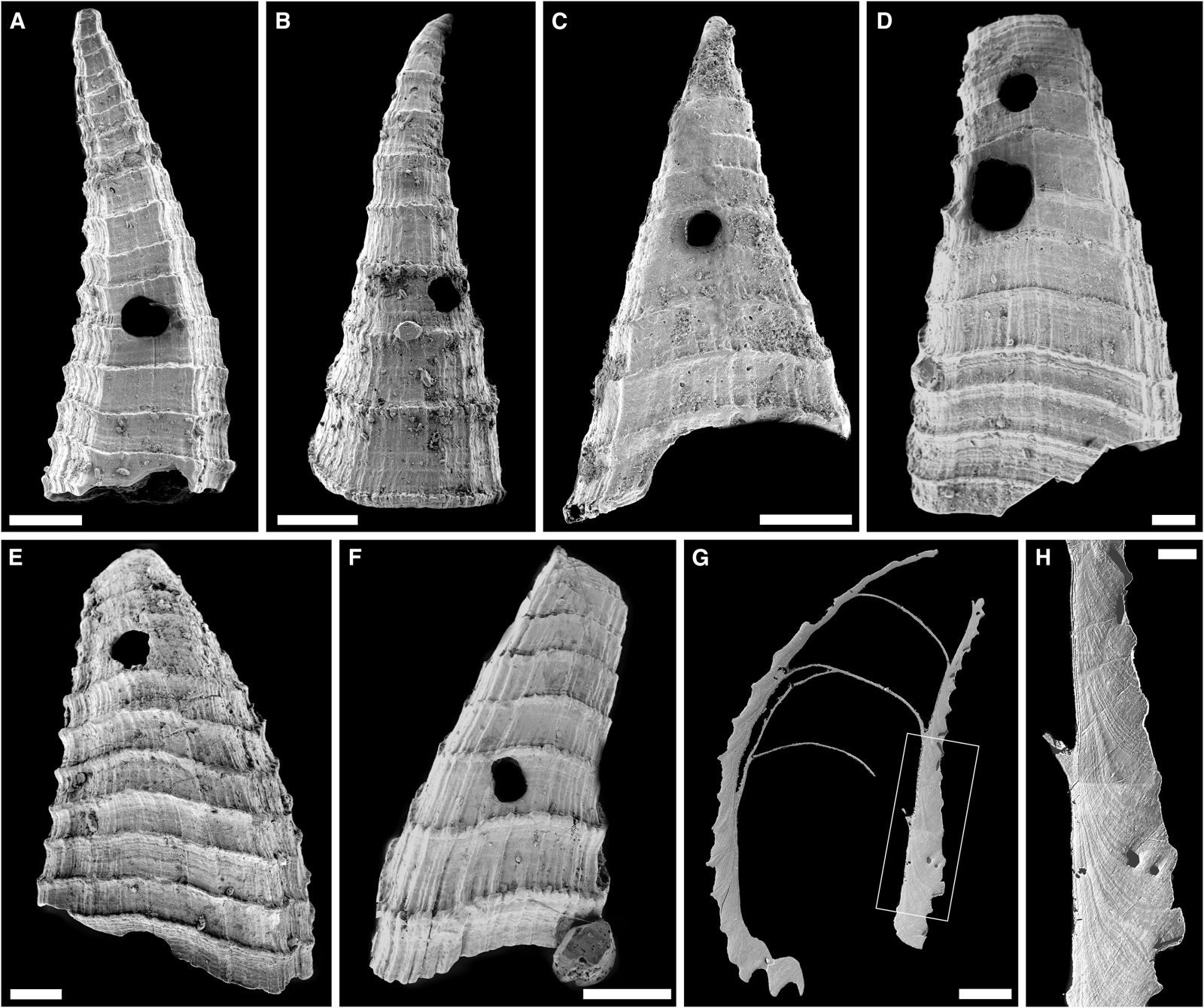Researchers discover a 517-million-year-old arms race ⚔️
Follow us on Google News (click on ☆)
A recent study published in Current Biology sheds light on the earliest documented predator-prey interactions from the Cambrian era. These interactions involved a shelled organism, Lapworthella fasciculata, and an unidentified marine predator capable of piercing its shell. This discovery offers a unique insight into the selective pressures that shaped the early evolution of marine ecosystems.

Examples of Lapworthella fasciculata shells showing perforation holes.
Credit: R. Bicknell, et al (2025) Current Biology.
The researchers analyzed over 200 fossil specimens, revealing an increase in shell thickness in response to predation. This adaptation suggests an evolutionary arms race, where prey strengthen their defenses and predators develop more effective means to overcome them.
This study highlights the importance of predation in the Cambrian explosion, a period marked by a rapid diversification of life forms. Predator-prey interactions played a key role in the evolution of biomineralized organisms, influencing their morphology and ecology.
The shells of L. fasciculata, studied under a scanning electron microscope, show characteristic perforations. These marks testify to the presence of a specialized predator, likely a mollusk or worm, capable of piercing the defenses of its prey.
The analysis of the fossils also allowed these interactions to be dated to approximately 517 million years ago. This period corresponds to a critical phase in the evolution of marine ecosystems, where the complexity of biological interactions significantly increased.
The results of this research, funded by several institutions including the University of New England and the American Museum of Natural History, enrich our understanding of the evolutionary mechanisms at work during the Cambrian. They illustrate how selective pressures can lead to rapid and complex adaptations.
Finally, this study opens new perspectives on the study of ancient ecosystems. It shows that predator-prey interactions, although often difficult to document, are essential for understanding the evolution of life on Earth.
What is an evolutionary arms race?
An evolutionary arms race describes a process where two species, often a predator and its prey, evolve in response to each other. This phenomenon is comparable to an arms race, where each improvement in one species leads to a counter-adaptation in the other.
In the case of Lapworthella fasciculata, the increase in shell thickness in response to predation illustrates this concept. Predators, by developing more effective means to pierce these shells, push prey to further strengthen their defenses.
These dynamic interactions play a crucial role in the evolution of species. They can lead to rapid adaptations and a diversification of life forms, as observed during the Cambrian explosion.
Documenting these arms races in the fossil record is rare, making this discovery particularly significant. It offers valuable insight into the evolutionary mechanisms that shaped ancient ecosystems.
How do fossils inform us about ancient ecosystems?
Fossils are windows into past ecosystems. They allow scientists to reconstruct interactions between species, environmental conditions, and evolutionary processes that shaped life on Earth.
In this study, the perforated shells of Lapworthella fasciculata provide direct evidence of predation. The marks left by predators on these shells reveal valuable information about the behaviors and adaptations of the species involved.
The analysis of these fossils also allowed these interactions to be dated and linked to major evolutionary events, such as the Cambrian explosion. This period is marked by a rapid diversification of life forms and the emergence of new survival strategies.
Finally, fossils help us understand how ancient ecosystems functioned and how they evolved over time. They offer clues about the selective pressures that influenced the evolution of species and the structure of biological communities.